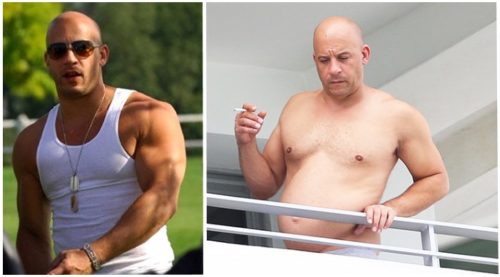It is absolutely NOT possible for your body to convert fat into muscle tissue. However, Many fitness and health magazines like to spread such preposterous claims as easily turning fat into muscle tissue on their covers every once in a while. They do it for the same reason they do any other eye-catching lie, to make some extra money, by manipulating people about something they are emotionally invested in, like their bodies. However, it is simply not true. There’s no way you can somehow convert fat into muscle, it is biologically impossible.
The difference between muscle and fat?
Muscle and fat tissue are entirely different. Muscle is an active tissue which burns calories/energy all the time even when you sleep, it’s kind of like an engine humming in the background. Whenever you move, you burn more calories, like a car will spend more fuel the faster it goes. Fat tissue, on the other hand, is a storage of unused/excess energy.
Besides the use as a padding to protect your body against accidental falls, as an insulation layer to preserve body heat, body fat is actually a complex organ, as essential to human life as a heart or liver.
You do need to carry some amount of body fat to stay healthy, however that doesn’t mean that you can let go and become a couch potato.
A deeper analysis
Now that we know the difference between muscle and tissue, let’s get to the key thing we’re all interested in: burning off the fat and growing our muscles. It is actually rather impossible to do both of these things at the same time. The main reason for this is that if you want to maintain an environment inside the body which is conducive to fat burning, you will be forced to reduce your caloric intake. Muscle growth requires additional calories, the same way you would need extra building material to add another floor to your house.
Additionally, insulin, a key hormone in building muscle is the arch-enemy of fat burn and is released every time you consume carbs. The type of carbs determines the amount of insulin and how fast it is released. The main thing to remember is that you will have to focus on one of these goals at a time and do the other later on, which is the standard in bodybuilding circles (bulk phase, cut phase).
It is usually recommended that you start by trying to put on as much muscle as possible. This means that you’ll have to eat more calories than you burn, including the extra carbohydrates, and you’re going to have to live with the fact that you’ll inevitably gain a few pounds of fat while doing this. This is not such a big deal if you carefully monitor your body fat levels and keep the increase under control to avoid turning into a balloon. Train hard and heavy, eat lots of healthy foods like chicken, beef, tuna, pasta, oatmeal, rice and avoid junk food, alcohol, and candy.
The Diet
Once you’ve put around 5-10 lbs of muscle or whatever your original plan was, end the bulking phase and start the cutting phase. You’ll have to keep track of your caloric intake in a logbook, log everything you consume and then adjust your caloric intake so that you consume an average of 500 calories less then what you burn each day. This is where you’ll actually reap the benefits of gaining muscle in the bulking phase. Remember, we said that muscle tissue is like an engine that’s running in the background?
Muscle tissue burns calories non-stop and the more muscle mass you have, the more calories you burn without having to do anything. This logically translates to a more relaxed diet, which is to say, if your current muscle mass increases your metabolism by around 200 calories a day, that means you can eat 200 calories more and continue losing body fat. The end result is that you’ll look better, eat more and still lose fat with the same speed. That is a pretty good deal, don’t you think?
Always keep protein consumption high
When you’re on a cutting diet, you want to maintain high protein intake. You should also make sure that you keep training with the same intensity as you did before. This is your best strategy against losing all that hard-earned muscle in the previous months. The main goal here is to slowly, but steadily get rid off the fat whilst losing as little muscle mass as possible, so you need to plan this right. You shouldn’t make any sudden changes in your dietary habits, as this will more likely worsen the situation, instead of improving it.
After 2-3 months have passed you should have lost around 10-15 lbs of fat, and provided you did everything right, you should have also kept most of your muscle gains prior to beginning the cutting diet. So, by taking a bit more time and dividing your two goals into separate tasks, you managed to achieve what you wanted. If you tried to do both things at the same time, you would have certainly failed at least in one of the two pursuits.



Post your comment